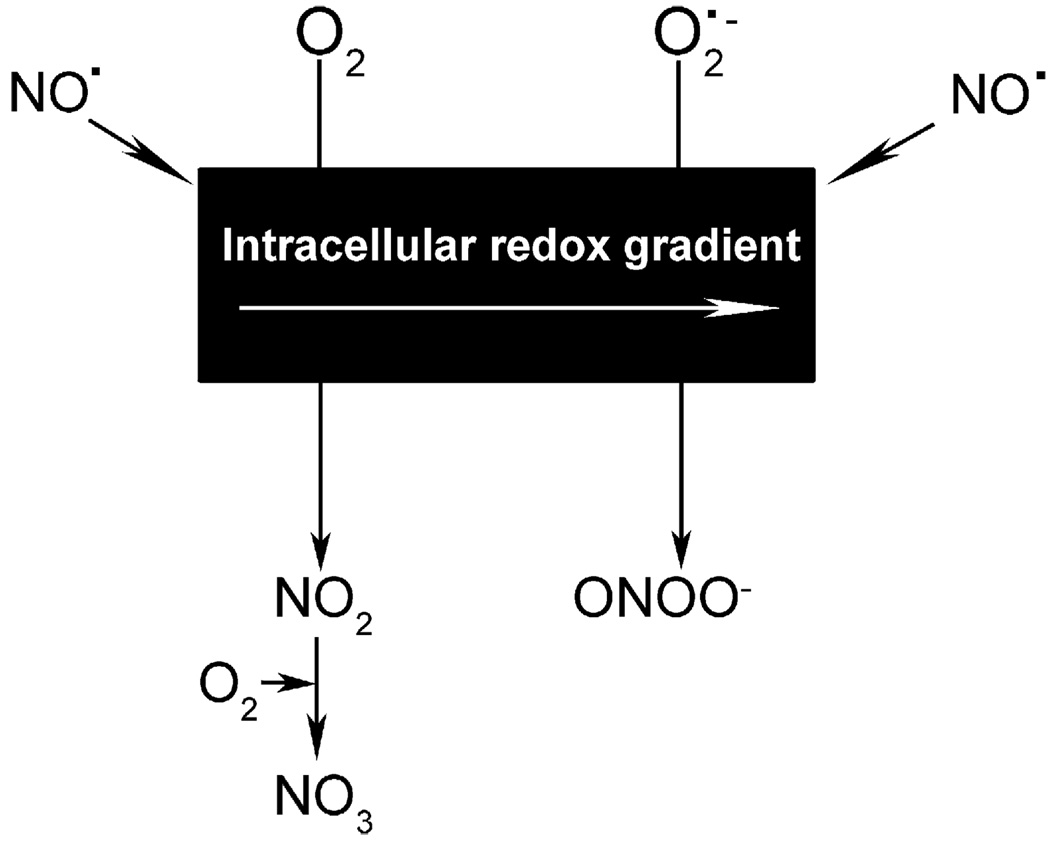Figure 2.
Cellular microenvironment changes the fate of NO. After synthesis by iNOS, eNOS, or nNOS, NO freely diffuses across membranes, forming a concentration gradient. Within this microenvironment also exists a redox gradient (represented by the black rectangle) formed by the presence of oxidant/reductant-coupled species. The redox state thus determines whether NO ultimately forms what are usually benign vs. pathogenic RNI. As an example, when formed in the presence of O2, NO can oxidize to NO2 and NO3. Whereas when formed in the presence of superoxide (SO or O2•−), NO oxidizes to form peroxynitrite (ONOO−) [12]. This figure is reprinted from [77].

